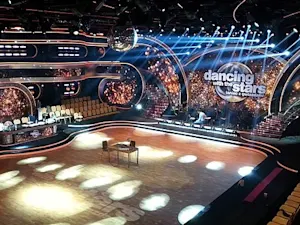
The Genetic Mystery of Apple Seeds
Apple seeds don't make good apple trees. It's a strange fact but true! In fact, learning about apple seeds reveals just how complicated agriculture can be!
You probably know the story of Johnny Appleseed, the eccentric sower of apple seeds with a pot for a hat. Well, John Chapman was a real person who, in the 19th century, really did go out and plant apple trees en masse throughout the American Midwest.
 Drawing of Jonathan Chapman, aka Johnny Appleseed, by H. S. Knapp. Public domain.
Drawing of Jonathan Chapman, aka Johnny Appleseed, by H. S. Knapp. Public domain.
However, the apple trees he planted did not bear the crisp, juicy, sweet fruits you'd find in a grocery store. These apples were generally not palatable for direct consumption and only useful for making hard cider... which was actually the goal. In a time before modern water purification, a reliable source of alcohol was used to kill off bacteria in drinking water, and at the time hard cider was the beverage of choice in America.
But why were Johnny Appleseed's apples not the tasty treats we imagine when we think of apples? Simple! It's because, true to his name, he grew them from seeds.
The Apple Does Fall Far From the Tree (Genetically)
Apples are not "true to type," or more scientifically, their seeds are heterozygous. That means each apple seed contains genes for an entirely unique apple tree than its parent (much like how human children are not identical clones of their parents), and the differences can be radical. From a biological standpoint, this makes sense; genetic variation increases the chance that at least one seedling will survive as the seeds get carried to new environments.

At the same time, this means that you can't just sow a bunch of apple seeds and get a good orchard. You have no idea if any given apple seed will produce a tree that makes the most delicious apples in history or a crabapple tree or something in between. The apples any seed will produce is impossible to predict. Agriculture needs reliability and consistency to function properly, and thus genetic variation isn't ideal for growing eating apples.
How do you solve this problem?
Apples to (the Same) Apples
It all comes down to grafting. First discovered in China 3,000-4,000 years ago, grafting is like low-tech cloning for apple trees. Simply take a branch off an apple tree you like and graft it to the stump of a new apple tree seedling. The branch will grow and produce the desired apples just like the original tree, and bam! Consistency!

This is how apple agriculture has worked for millennia. For example, every Honeycrisp apple you've ever tasted originates from one singular tree in the distant past. Better yet, farmers can use grafting to select for tree traits beyond tasty fruit, like shorter trees for easier harvest or faster blooming and apple-growing.
Of course, a lack of genetic diversity means that apple orchards are more susceptible to environmental disasters and disease. But that's just the price you pay to get better apples than Johnny Appleseed could ever provide!
References: Can I grow an apple tree from a seed? | Ask Sam: Why Can't I Get The Same Type Of Apple If I Plant An Apple Seed? | Want To Grow An Apple Tree? Don't Start With Apple Seeds | That's Where My Apples Come From? The Basics of Grafting | Where Did All the Apples Go? | The Real Johnny Appleseed Brought Apples—and Booze—to the American Frontier






















